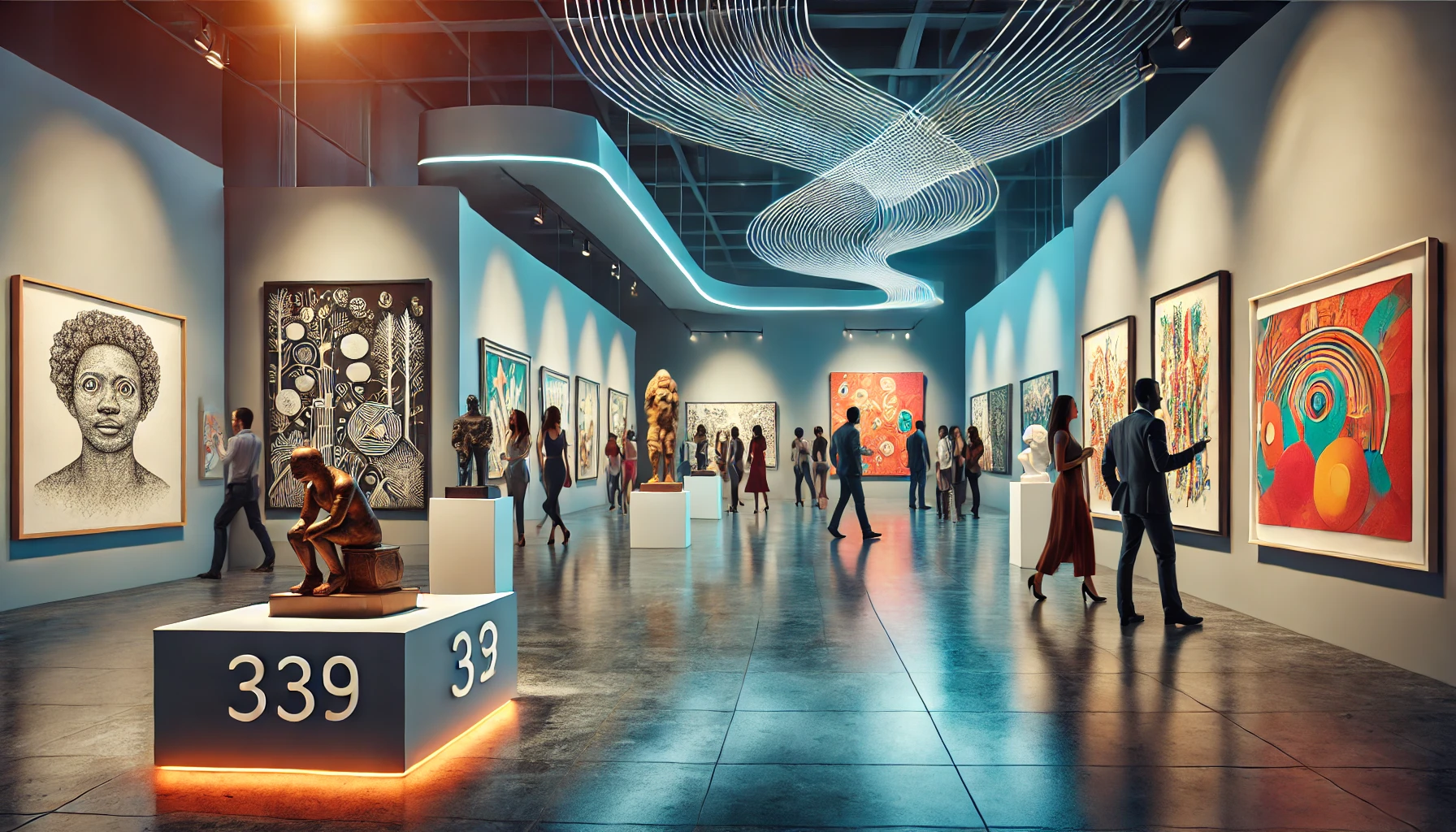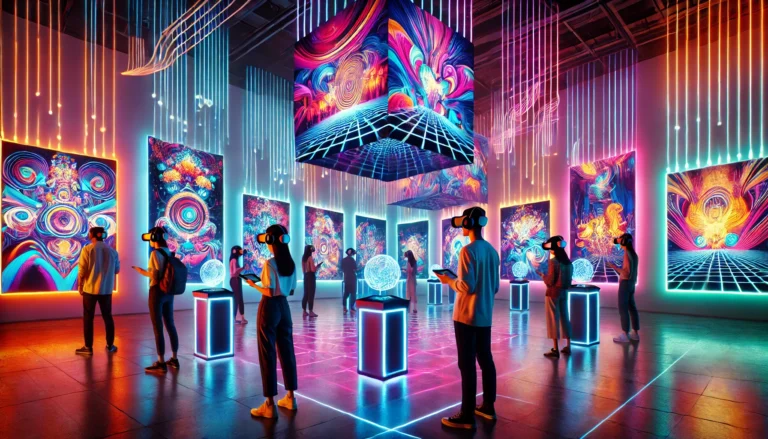Have you ever walked into an art show and felt as if you’d stepped into another world—a realm where every brushstroke whispered a secret and every sculpture told a story? I still remember my first art show. It was an unexpected pop-up exhibition in a converted warehouse. In that moment, the cold, industrial space transformed into a vibrant playground of color and emotion. As a creative strategist in the art and design industry, I learned early on that hosting an art show is not just about displaying art. Instead, it is about crafting an immersive experience that resonates with every visitor.
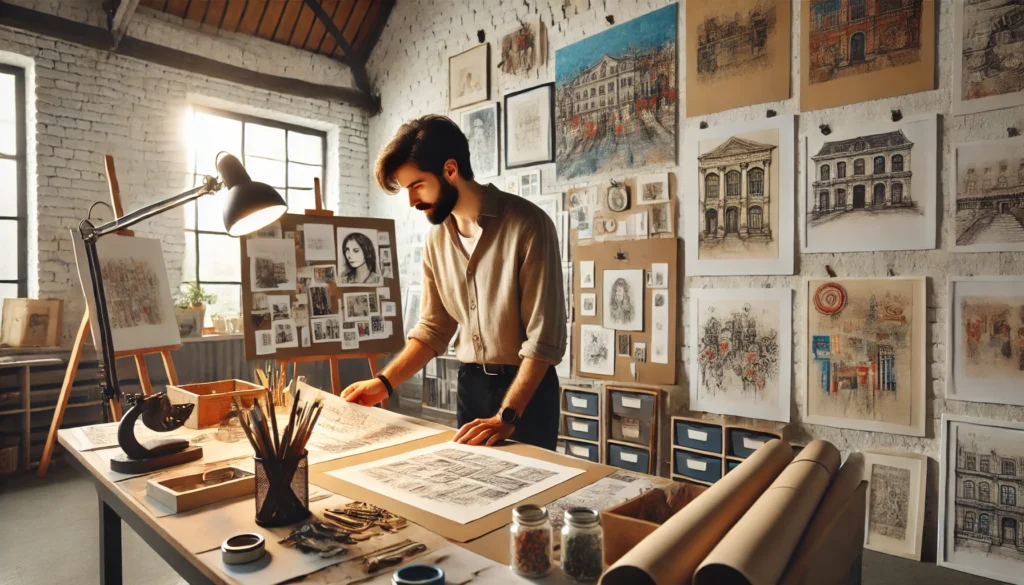
For young professionals and creative enthusiasts alike, art shows offer a tangible connection to creativity. They provide a chance to see passion come to life. For further reading on curation fundamentals, check out this helpful resource on curating an exhibition from Artwork Archive. Whether you are an aspiring curator, an emerging artist, or simply someone eager to explore the creative world, this guide will walk you through the essential steps to create an art show that captivates and inspires. In other words, think of it as designing a journey where every step—from conceptualization to execution—is a carefully choreographed dance that invites your audience to experience art in its fullest form.
Understanding the Basics of Art Show Curation
Art show curation is much like crafting a compelling narrative. First, it begins with a vision. Then, it develops through thoughtful planning. Finally, it culminates in an experience that lingers long after the final curtain call. Imagine the process as painting on a vast, blank canvas; every decision adds a stroke to your masterpiece, layering meaning and emotion. o learn more about organizing a unified exhibition, you might explore this guide to curating an exhibition from Artwork Archive.
Defining Your Vision & Goals
The first step is to pinpoint the story you want your art show to tell. Ask yourself: What is the heartbeat of your event? Is it a celebration of emerging talent, an exploration of a specific art movement, or a fusion of traditional art with digital innovations? For example, my early projects always started with a clear, personal vision. In one project, the theme “Urban Rhythms” emerged from the pulsating energy of city life. Consequently, it resonated with teenagers exploring street art and professionals drawn to raw urban narratives.
Knowing Your Audience
Curating an art show means speaking the language of your visitors. Moreover, in today’s dynamic world, tastes shift quickly. Therefore, it is crucial to understand who your audience is. If you target a demographic that spans from teenagers to seasoned professionals, your event should blend elements that spark youthful curiosity with those that honor refined art appreciation. Additionally, consider incorporating interactive installations alongside classic displays to appeal to all.
The Importance of a Theme
A unifying theme serves as the backbone of your art show. It guides every decision, from artwork selection to the exhibition’s layout. In fact, a well-chosen theme is like the melody in a song; it ties diverse notes into a harmonious composition. Whether your theme is bold and provocative or soft and introspective, it should encapsulate your message and invite personal interpretation.
In summary, your art show is more than an event—it is a narrative waiting to unfold. Each element, like a carefully chosen color in a painting, contributes to a larger picture that is uniquely yours.
Planning Your Art Show – From Concept to Execution
Much like a master chef assembling a gourmet meal, planning an art show involves blending diverse ingredients. First, you must transform your creative vision into a tangible event. Every decision plays a critical role.
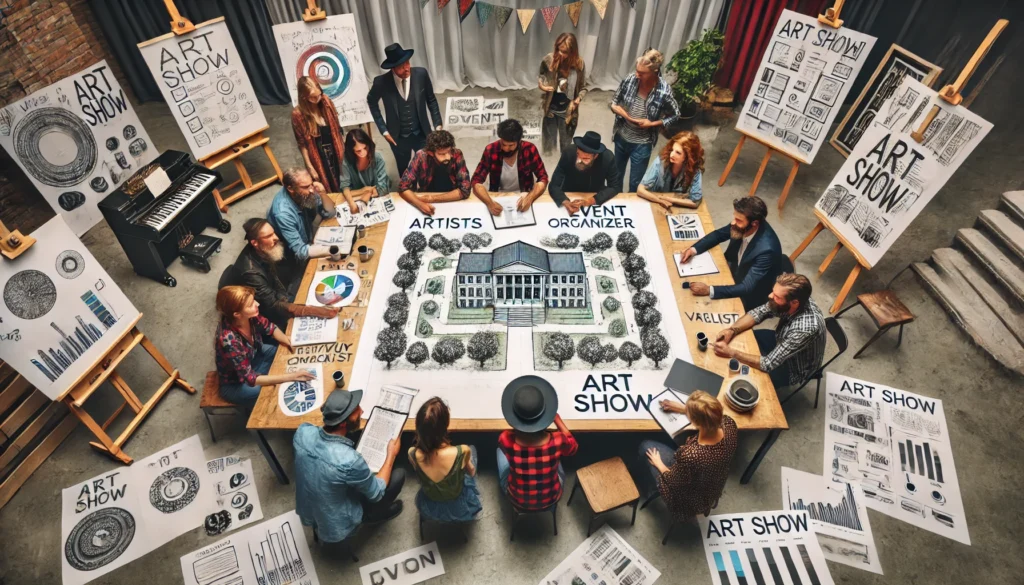
Mapping Out the Journey
Visualize the planning process as sketching a detailed blueprint. Every line and note must align with your overarching theme. I remember my early days of event planning. Each decision was like choosing the right palette for a painting. Without a clear destination, you simply cannot start.
Venue Selection
- Crafting the Perfect Setting:
The venue is your canvas. Whether you choose a sleek, modern gallery or an unconventional space such as a renovated warehouse, the setting sets the tone. For instance, I once scouted a venue that captured the gritty yet vibrant spirit of urban life. That abandoned loft soon became a dynamic gallery that resonated with every visitor. - Considerations:
Focus on accessibility, ambiance, and creative layout possibilities. In addition, ask yourself: Does this space enhance my show’s narrative? Will it inspire both emerging talent and seasoned art lovers?
Budgeting and Sponsorship
- Financial Foundations:
Every successful art show is supported by a solid budget. Think of it as the frame that upholds your creative masterpiece. In one project, I negotiated with local businesses for sponsorship. This eased financial pressures and forged valuable community relationships. - Tips:
Develop a detailed budget that covers the venue, logistics, and promotional activities. Moreover, seek partnerships from local art supply stores, digital design tool providers, or community organizations. Always ask: Which partners share my creative vision? How can each dollar enhance the visitor experience?
Creating a Timeline & Checklist
- From Chaos to Choreography:
A well-structured timeline breaks the overwhelming process into manageable steps. I once compared my timeline to a symphony. Each cue—from planning to the final curtain call—played its part in building a memorable crescendo. - Action Steps:
Break your project into phases: initial planning, pre-event marketing, setup, the event itself, and post-event follow-up. Use a comprehensive checklist to track milestones. Additionally, consider using digital tools or project management apps to keep your team aligned.
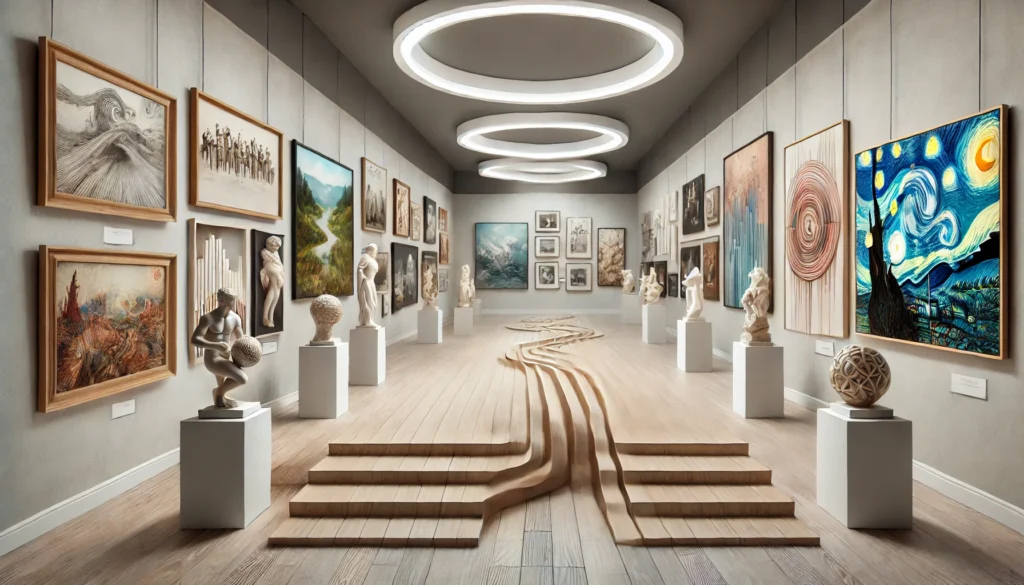
Building a Cohesive Collection and Display Strategy
Imagine your art show as a well-curated playlist. Each artwork is a distinct track that contributes to an unforgettable musical journey. This selection process allows you to compose a narrative that resonates with every visitor.
Artwork Selection
Select pieces that align with your overarching theme and evoke emotion. Think of each artwork as a unique story waiting to be told. For example, I arranged pieces in a deliberate progression. Each piece served as a chapter in a visual narrative that transitioned smoothly from one mood to the next.
Layout and Flow
How you display your collection is as important as the pieces themselves. Consider the venue as a living canvas. The placement of each work should guide your audience naturally through the space. Use lighting, spacing, and even soft background music. In this way, visitors experience a gentle flow that encourages reflection.
Balancing Established and Emerging Artists
Incorporate a mix of well-known and emerging talents. This approach creates a dynamic balance. It lends credibility to your event while offering fresh perspectives. Therefore, ask yourself: How does each piece contribute to the overall narrative? Can the pieces coexist without overshadowing one another?

Marketing and Promotion Strategies
An art show’s success often hinges on its ability to attract the right audience. Thus, your marketing strategy must build anticipation well before the opening night.
Digital Marketing
Harness the power of social media, email campaigns, and engaging blog posts. Use vibrant visuals and behind-the-scenes teasers to spark curiosity. For example, a series of Instagram stories featuring sneak peeks and artist interviews created significant buzz for one event.
Traditional Methods
Do not underestimate word-of-mouth and local media. Flyers in community centers, features in local art magazines, and partnerships with local businesses can amplify your reach. In fact, combining modern methods with traditional ones creates a powerful blend that enhances your overall campaign.
Tech-Enhanced Promotion
Innovative tools such as virtual tours or augmented reality previews allow your audience to experience a slice of the event early. Consequently, these interactive previews build interest and position your event as forward-thinking and accessible.
Engaging the Audience During the Art Show
An art show should be more than a series of displays. Instead, it must offer an interactive journey that invites visitors to participate and connect.
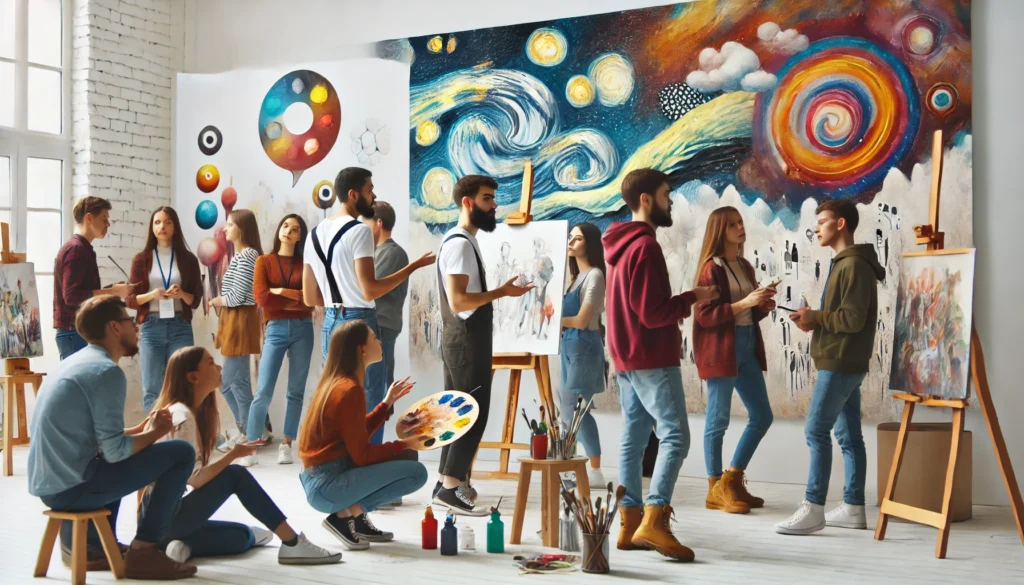
Interactive Elements
Introduce live demonstrations, artist Q&A sessions, or hands-on workshops. For instance, I have witnessed events where visitors contributed to a collective mural. In that case, the show transformed into a living artwork that everyone helped shape.
Technology Integration
Utilize augmented reality (AR) or virtual reality (VR) to add depth to your exhibition. Imagine scanning a QR code next to a painting to reveal an animated backstory. Alternatively, consider providing a brief audio narrative via a smartphone. These enhancements make the art more accessible, especially for tech-savvy visitors.
Behind-the-Scenes Experiences
Offer guided tours or “making-of” sessions that reveal the creative process. In doing so, you forge personal connections with your audience. This insight allows visitors to appreciate both the finished pieces and the passion behind them.
Post-Event Follow-Up and Community Building
The art show may conclude, but its impact should continue to resonate. Therefore, post-event engagement is essential to transform a one-time experience into a lasting community.
Collecting Feedback
Implement surveys or digital feedback stations. These tools gather visitor impressions. As a result, you gain insights that validate your efforts and guide future events.
Sustaining Social Media Engagement
Keep the conversation alive by sharing photos, videos, and behind-the-scenes content after the event. Encourage visitors to share their experiences using a unique hashtag. In this manner, you extend the event’s life and build community.
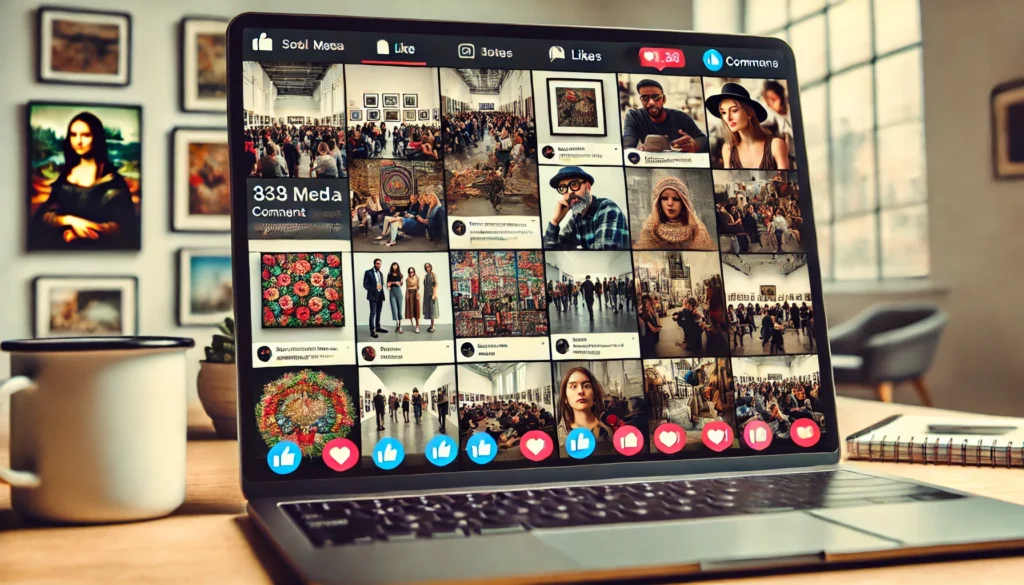
Creating a Long-Term Community
Consider establishing an online forum or membership group. This platform allows art enthusiasts to discuss trends, share projects, or preview upcoming shows. Ultimately, you transform your event into an ongoing dialogue among creative minds.
Visuals and Media
Visual storytelling is a powerful tool that can elevate your art show narrative. First, consider using high-quality images. They should showcase the setup process, highlighted artworks, and candid moments from the event. Next, include short video clips that feature artist interviews or time-lapse sequences of the setup. In addition, consider creating infographics. These can outline the planning process, key timelines, or the evolution of your theme. Consequently, interactive maps or clickable timelines guide visitors through your event’s narrative.
Conclusion
Hosting an art show is about crafting an immersive experience that goes far beyond merely displaying art. Instead, it is about inviting your audience into a world where creativity comes alive. By understanding the fundamentals of curation, planning meticulously, building a cohesive collection, engaging through innovative marketing and interactive elements, and fostering long-term community connections, you create not just an event but a memorable journey.
As you embark on your own curatorial adventure, ask yourself: What story do you want to tell? Let this question ignite your passion for art and design. In doing so, you will inspire both yourself and your audience to explore, create, and connect in ways that transcend the ordinary.
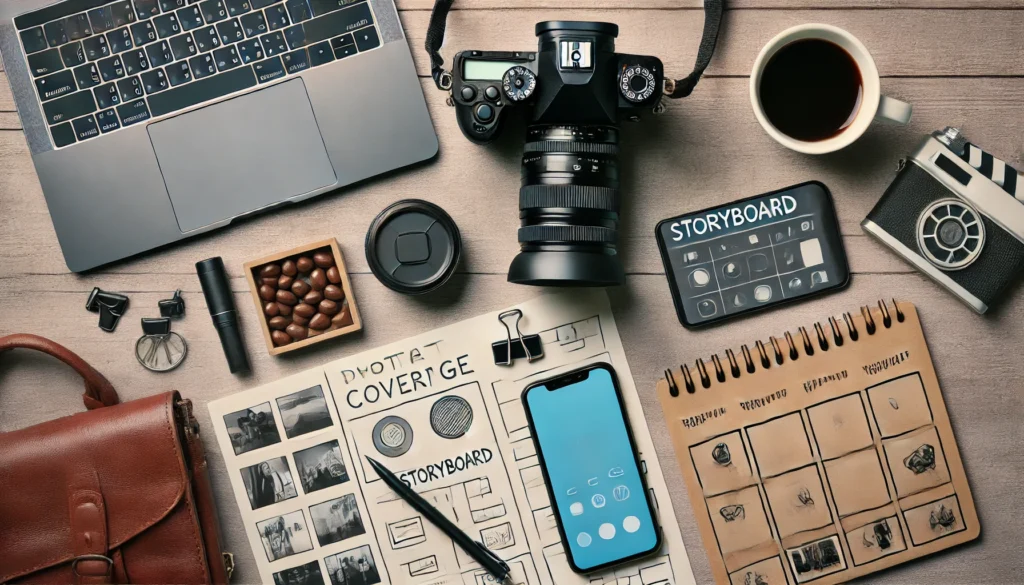
Audience Engagement
To ensure this content resonates and remains interactive, consider the following:
- Polls and Surveys: Embed interactive polls asking readers which part of the art show they find most inspiring.
- Comments and Discussion: Encourage readers to share their own experiences or ideas about curating an art show.
- Live Q&A or Webinars: Host an online session after publication to discuss challenges, share anecdotes, and answer questions in real time.
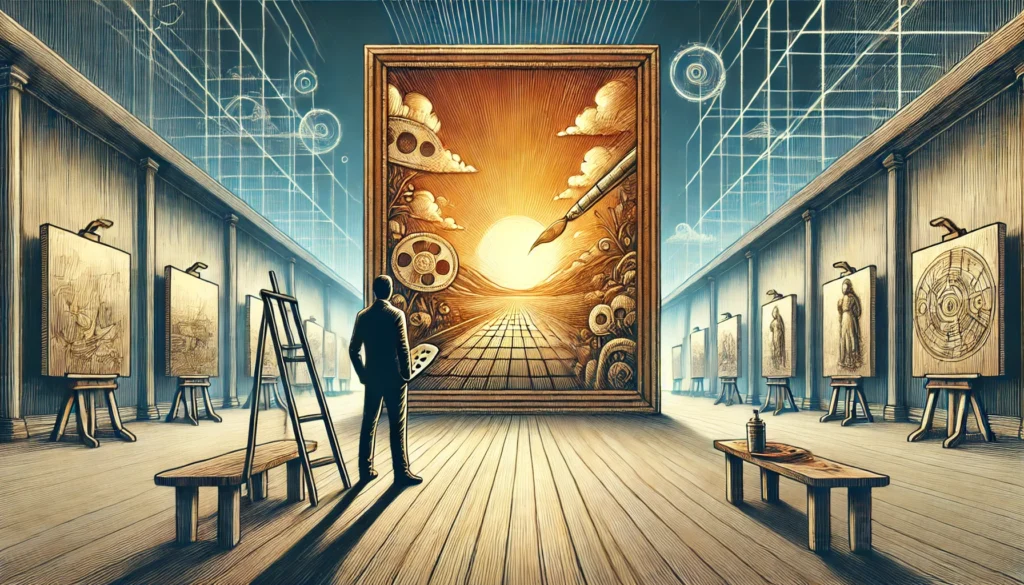
Embrace the journey of curating your vision. With careful planning, creative storytelling, and a focus on community, your art show can become a dynamic celebration of creativity that leaves a lasting impact. Let your vision shine, and watch as your art show transforms into an immersive, unforgettable experience.
further reading on curation fundamentals https://www.artworkarchive.com/blog/7-tips-for-curating-an-exhibition

